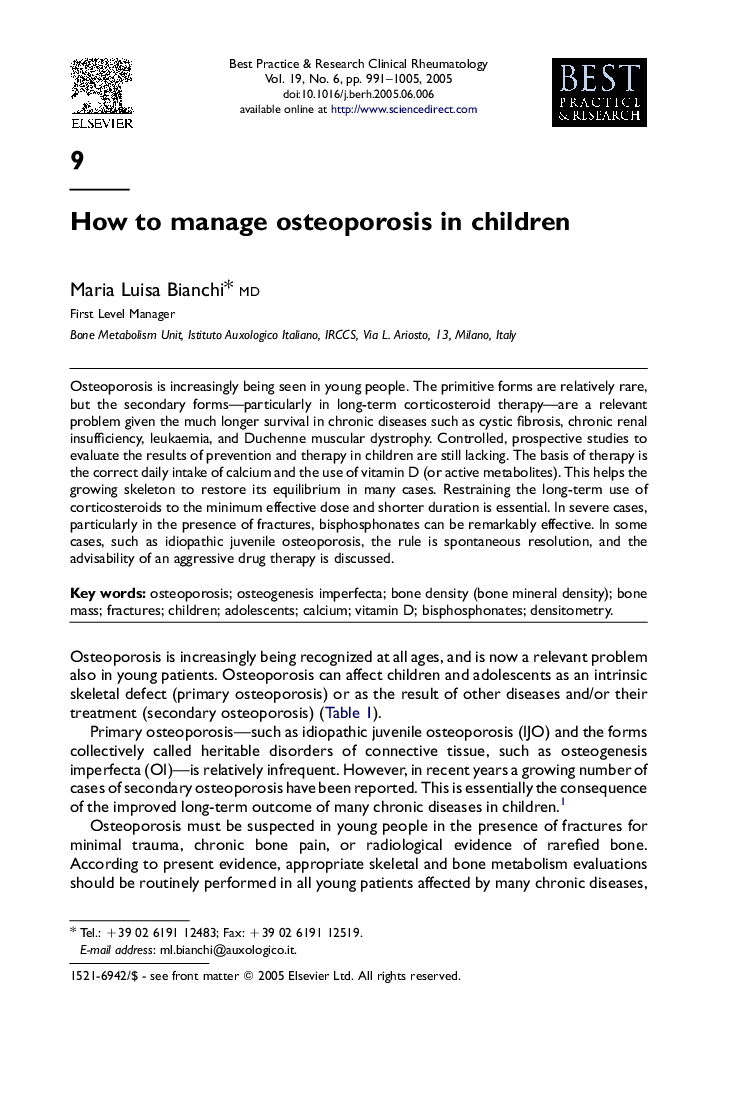| Article ID | Journal | Published Year | Pages | File Type |
|---|---|---|---|---|
| 9261967 | Best Practice & Research Clinical Rheumatology | 2005 | 15 Pages |
Abstract
Osteoporosis is increasingly being seen in young people. The primitive forms are relatively rare, but the secondary forms-particularly in long-term corticosteroid therapy-are a relevant problem given the much longer survival in chronic diseases such as cystic fibrosis, chronic renal insufficiency, leukaemia, and Duchenne muscular dystrophy. Controlled, prospective studies to evaluate the results of prevention and therapy in children are still lacking. The basis of therapy is the correct daily intake of calcium and the use of vitamin D (or active metabolites). This helps the growing skeleton to restore its equilibrium in many cases. Restraining the long-term use of corticosteroids to the minimum effective dose and shorter duration is essential. In severe cases, particularly in the presence of fractures, bisphosphonates can be remarkably effective. In some cases, such as idiopathic juvenile osteoporosis, the rule is spontaneous resolution, and the advisability of an aggressive drug therapy is discussed.
Keywords
Related Topics
Health Sciences
Medicine and Dentistry
Immunology, Allergology and Rheumatology
Authors
Maria Luisa (First Level Manager),
